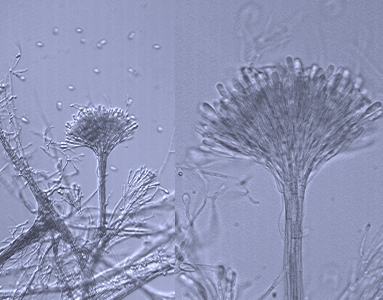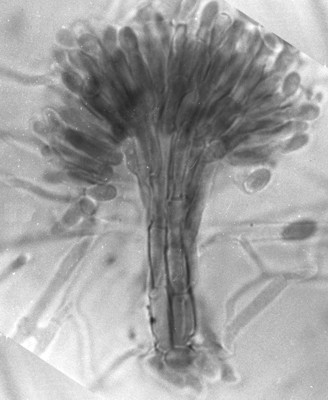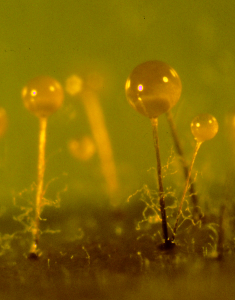Main page <> Index of descriptions <> Previous description <> Graphium <> Next description
Graphium



Fruiting structure a synnema, composed of fused dark conidiophores terminating in a droplet of liquid containing conidia. The colourless 1-celled spores are produced continuously from annellides, phialides or sympodially occurrring holoblastic loci, and collect in a large drop of fluid. The synnemata can be quite stout and up to 5 mm high.
The two panels in the leftmost photo were taken from a culture isolated from seeds of canola, an edible rapeseed. It is a typical Graphium anamorph of Kernia, Microascus, Petriella and Pseudallescheria, all members of the ascomycete family Microascaceae. A few non-synnematous (mononematous) structures can be seen in the photograph at left; strictly speaking, these should be called Scedosporium because they are not synnematous. However, many strains are highly synnematous when first isolated but become mononematous after a few transfers. Some species of Scedosporium cause disease in humans and should be handled with great care. The second photo is the Graphium anamorph of Kernia pachypleura. This species produces distinct but much smaller synnemata with more compact annellides. The picture at right is a macrophoto of synnemata growing on an agar surface.
Occurring on wood, dung, seeds, and plant debris.
Classification: Microascaceae. Holomorphs: Kernia, Microascus, Petriella, and Pseudallescheria. Ref: Ellis 1971; Seifert and Okada, 1993.